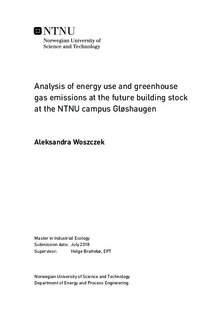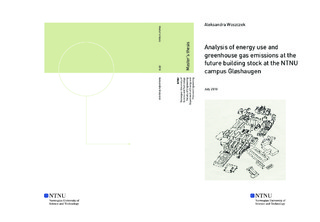| dc.description.abstract | The building sector plays an important role in a reduction in energy demand and greenhouse gas emissions. Recently, Zero Energy/Emission Neighbourhoods have aroused a lot of interest both in policies and in scientific research. The main objective of the study is to determine whether the building stock at NTNU Gløshaugen is able to become a Zero Energy/Emission Neighborhood towards 2050. A neighbourhood energy model is applied to the NTNU campus Gløshaugen in order to study the development of the building stock, energy demand and greenhouse gas emissions towards 2050.
The study shows that the building stock at NTNU Gløshaugen is expected to increase as a result of the relocation of campuses from other parts of Trondheim to NTNU Gløshaugen and in 2050 the heated floor area of the building stock is estimated to total 310 714 m2. In spite of the stock growth, the estimated energy demand is considered to decrease from 2017 to 2050 by 10% (in Baseline scenario) and by 26% (in the most optimistic scenario) thanks to renovation activity and demolition of less energy-efficient buildings. The greenhouse gas emissions are estimated to decline by 40% (in Baseline scenario) and by 57% (in the most optimistic scenario), mainly due to a significant decrease in heat demand and a substitution of district heating with low carbon heat technologies (heat pumps and NH3).
Finally, the study demonstrates that NTNU Gløshaugen is far from reaching a Zero Energy/Emission balance in 2050. High electricity demand and limited local energy generation from photovoltaics and a biogas-based CHP result in a heavy reliance on imports of electricity. The findings suggest that advanced renovation including extensive use of heat pumps is the most promising strategy for reduction in energy demand and greenhouse gas emissions. | |

